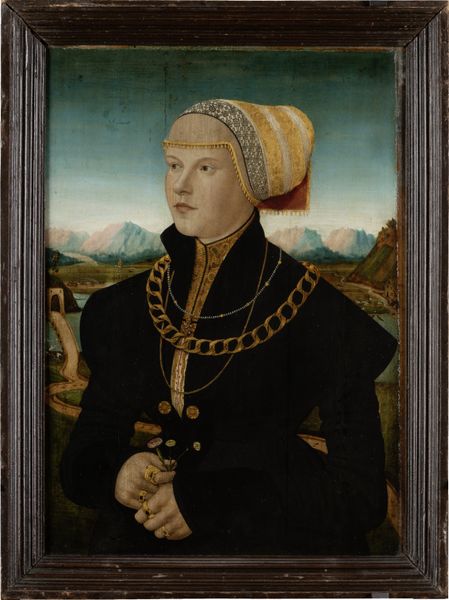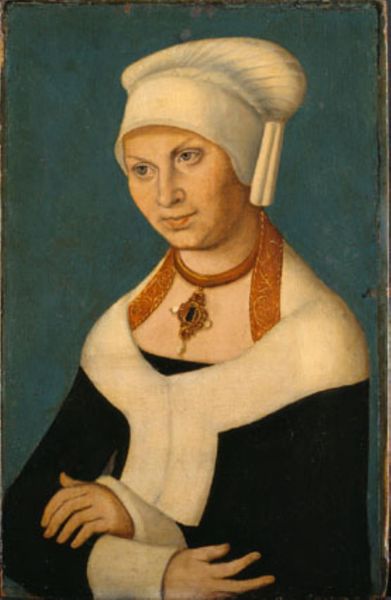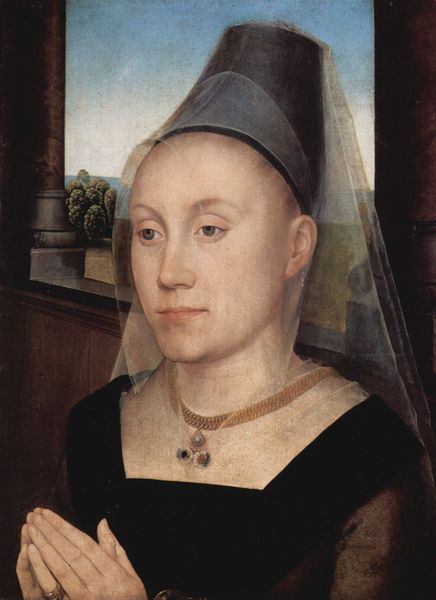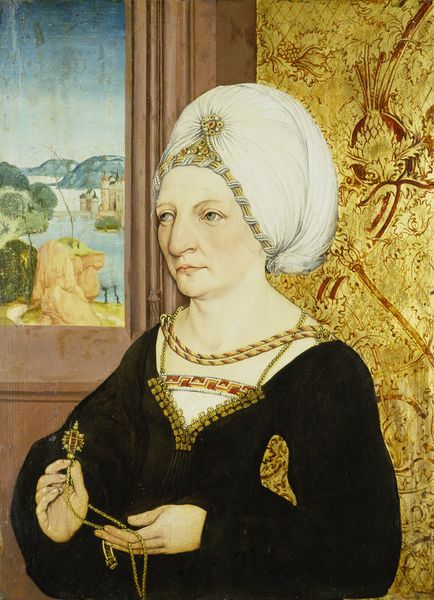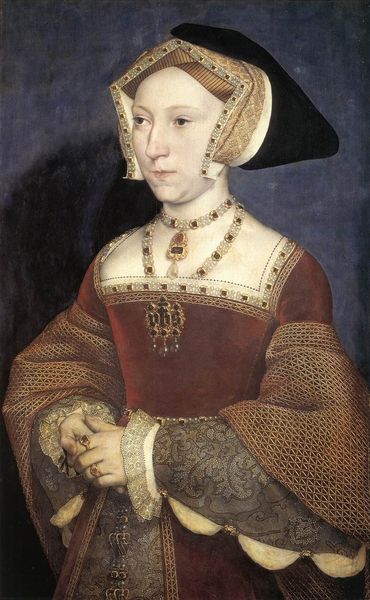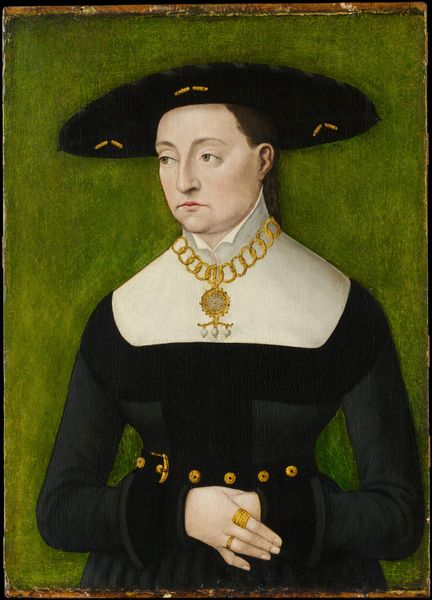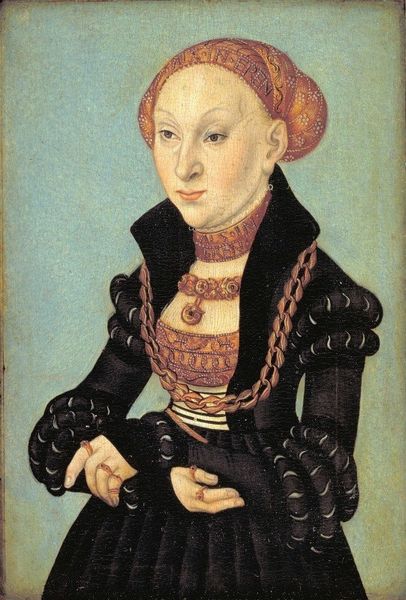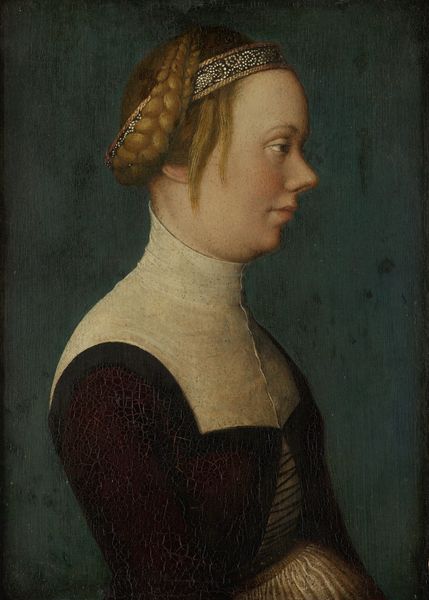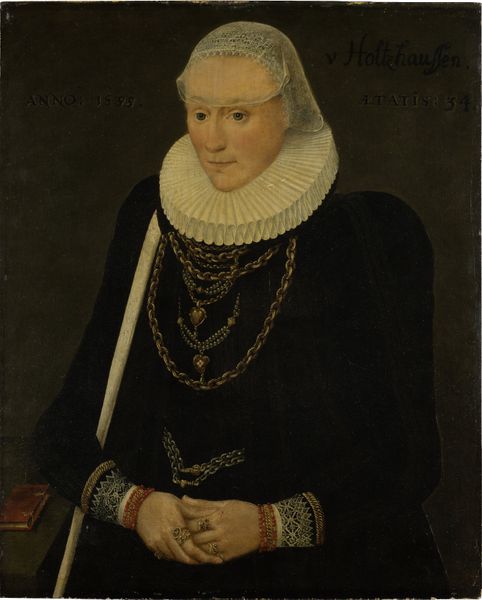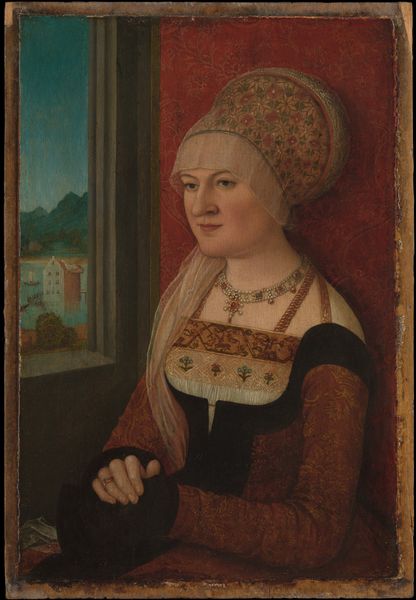
painting, oil-paint
#
portrait
#
painting
#
oil-paint
#
figuration
#
11_renaissance
#
oil painting
#
italian-renaissance
Dimensions: 59.2 x 43.5 x min. 0.5 cm
Copyright: Public Domain
Curator: Conrad Faber von Kreuznach painted this portrait of Anna von Holzhausen, née Ratzeburg, in 1535. It’s an oil painting, currently residing here at the Städel Museum. Editor: My first thought is, wow, the fashion is fascinating. The textures, the gold details, it's an incredible demonstration of wealth. Curator: Absolutely. Think of the power structures at play. Clothing in this era was a huge signifier. Her attire screams affluence and societal status. Look at the details, the elaborate gold chains and rings... Editor: Right, the rings! There are several, adorned with jewels. What statements were wealthy women trying to make? Were they active participants in the language of visual opulence and aspiration? Curator: That's exactly it. Women, then and now, used these external trappings to engage in social commentary, to project an image they wanted the world to see. Moreover, this particular portrait provides invaluable insights into gendered representation during the Renaissance. How often are women presented with this type of cool, contained confidence? Editor: It also humanizes her, don’t you think? She’s not some ethereal figure but a real woman rooted in her time. Faber really captured the detail of her clothing but seems equally interested in Anna's psychology. There is a lot of control displayed. Curator: Agreed. Considering its original audience, portraiture was so important for creating, disseminating, and maintaining ideas about families, legacy, and social standing. How do you feel that the staging behind her factors into this controlled depiction? Editor: With that scenic background, Anna von Holzhausen isn’t just a woman; she represents her family's stake in the world, in the community. It broadcasts dynastic continuity, doesn’t it? Thank you for offering some deeper historical context. It's made me rethink my initial reaction. Curator: And you've encouraged me to dig deeper into the complexities of Renaissance gender dynamics. The interplay between aesthetics and social context is always revealing, isn’t it?
Comments
No comments
Be the first to comment and join the conversation on the ultimate creative platform.
